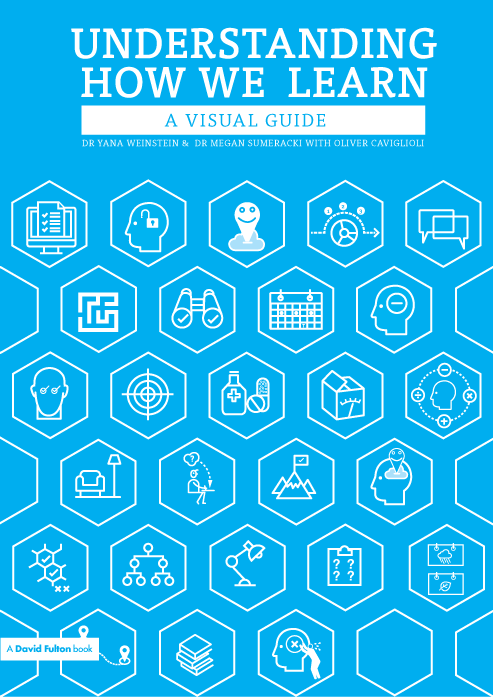
Notes on
Understanding How We Learn
by Yana Weinstein, Megan Sumeracki, Oliver Caviglioli
• 2 min read
Elaboration
The basic idea is pretty simple: ask how and why something works.
Your questions depend on your area, but it’s to get to the inner workings of the concept or topic.
In this book, they provide some steps for elaboration.
- first, gather all ideas you need to learn for a given class/course. Practice elaboration for each (how, why?). As you ask, find the answers in the material.
- As you do this, ask yourself questions about how the ideas are connected. How do they work together? How are they similar? How are they different?
- Relate the ideas to your own experiences or memories. And you might also want to try to connect things that happen in your day to the ideas (over time, so it’s spaced practice).
- Work your way up to being able to elaborate without materials. This is to practice retrieval.
Concrete Examples
This is another study technique.
Try to come up with concrete examples as you learn.
Spaced Practice
Spaced Practice is spaced practice. It tells us that it’s better to do 5x1 hr days than 1x5 hr day.
Space out your learning: it’s more effective.
Dual coding
It can be very effective to learn using both words and visuals.
Using both to learn is to use dual coding.
Reinforcement – Retrieval Practice
This is about retrieval of the ideas—hence “Retrieval Practice.”
You might, for example:
- do practice questions without looking in the book (until stuck or done)
- make your own questions to answer
- make flashcards (similar to above). But this can easily end in just just memorizing facts about the ideas. Try to go deeper: the interconnectedness of the ideas, how they work, how to use them in practice, etc.
- Or you can try to write down everything you know about X
- Or draw a map of the concepts or an illustration of some concept
Study Strategy
This is the basic study strategy.
Use Spaced Practice to determine (plan from) when you need to study.
Use[Retrieval Practice as your primary study method.
The other three, elaboration, dual coding, and concrete example are secondary methods they you can use if needed.
Liked these notes? Join the newsletter.
Get notified whenever I post new notes.